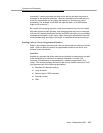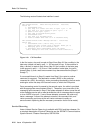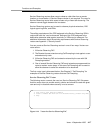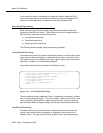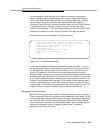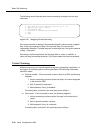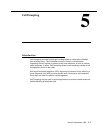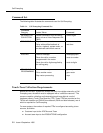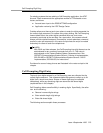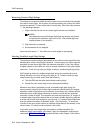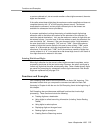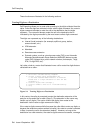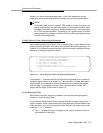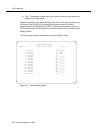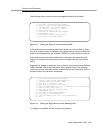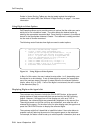
Call Prompting Digit Entry
Issue 4 September 1995
5-3
For existing systems that are adding a Call Prompting application, the AT&T
Account Team recommends the appropriate number of TTRs based on two
factors, as follows:
■ Account team input to the DOSS/ATTOMS configuration
■ Application review by the AT&T Design Center
Outside callers must have a touch-tone phone to enter the digits requested via
the
collect digits
command. For callers using rotary dialing, the Call Prompting
timeout takes effect, the
collect digits
command times out, and vector
processing continues at the next step. As a precaution, the customer should
always provide a default treatment (for example,
route-to
attendant command,
queue-to main split
command) in the vector script unless the script is created
exclusively for users of touch-tone telephones.
NOTE:
With G3V4 and later releases, the Call Prompting inter-digit timeout can be
administered for any number of seconds from 4 to 10. This value is
administered on the Feature-Related System Parameters form. See
DEFINITY Communications System Generic 3 Version 4 Implementation
,
555-230-655 or
DEFINITY Communications System Generic 3 V2/V3
Implementation
, 555-230-653, for instructions.
Provisions for users of rotary phones are illustrated in the vector scripts in this
chapter.
Call Prompting Digit Entry
The touch-tone digits entered by a Call Prompting user are collected via the
collect digits
command. This command allows the system to collect up to 24
digits from a touch-tone phone. Sixteen of these digits may be collected
immediately, while any remaining digits are stored as dial-ahead digits
(explained later in this chapter).
Call Prompting allows some flexibility in entering digits. Specifically, the caller
can do the following:
■ Remove incorrect digits strings
■ Enter variable-length digit strings
■ Enter dial-ahead digits
The following sections explain these processes.



